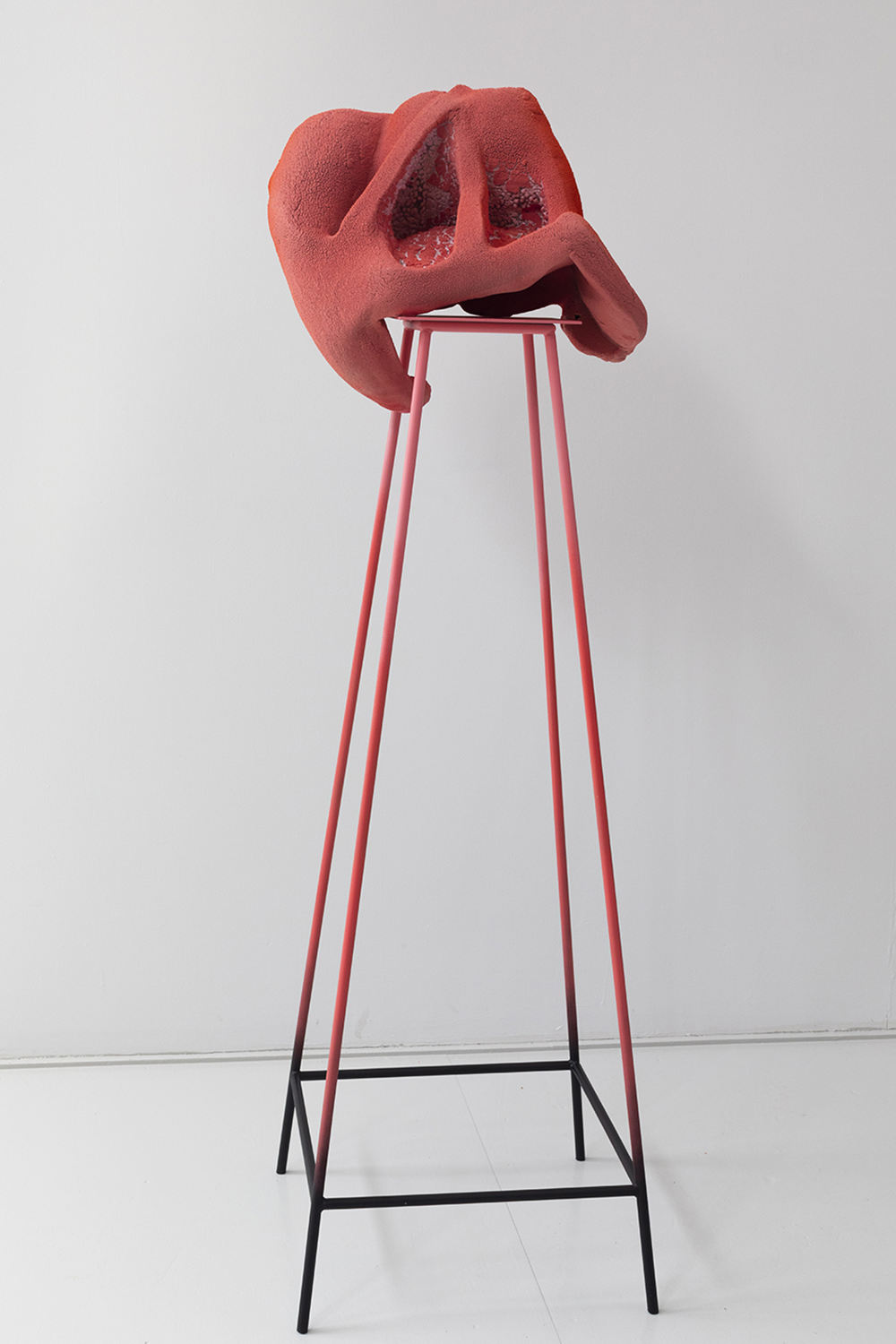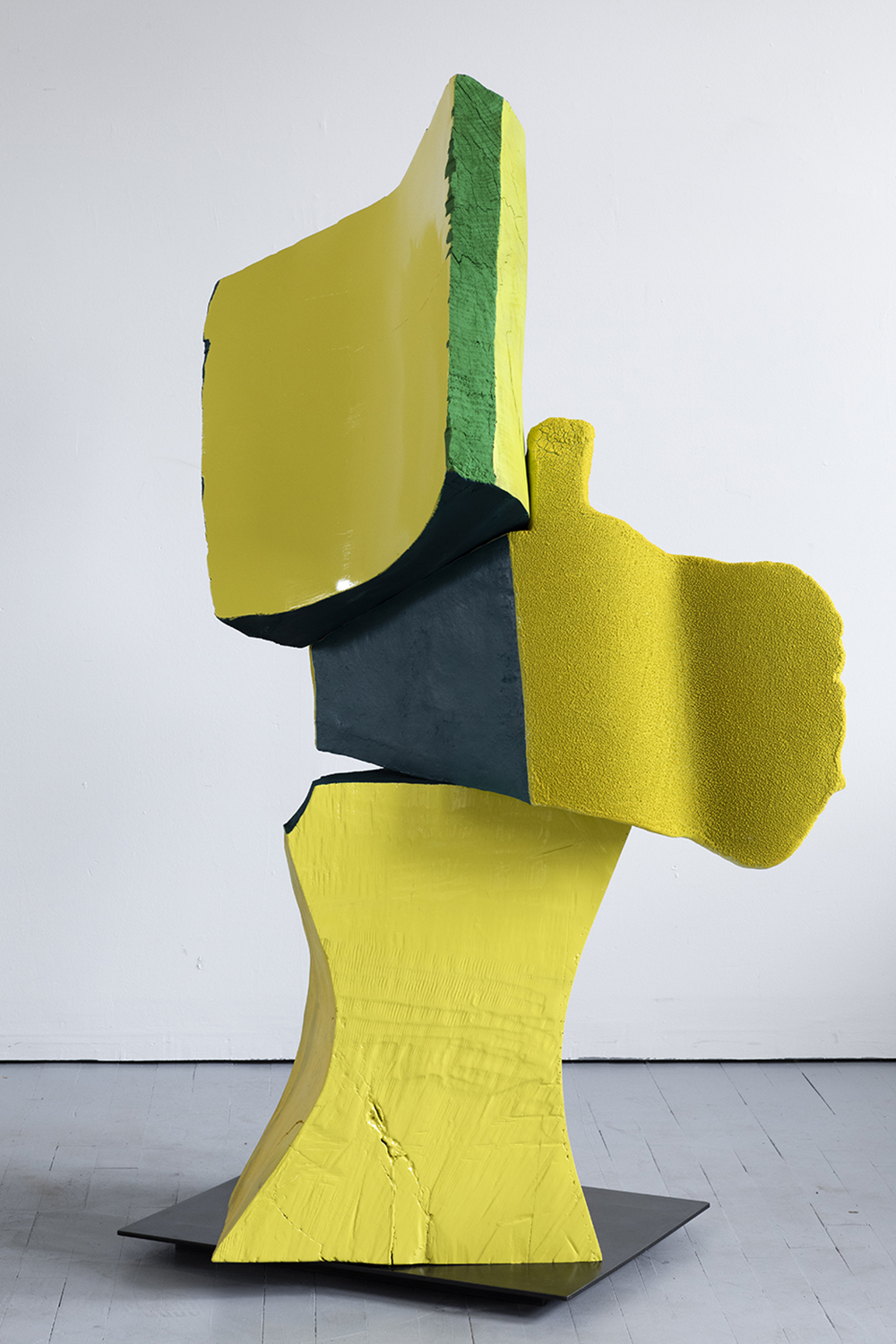Colorful, peculiar and static, Arlene Shechet’s freestanding sculptures possess an animation. They cant and list in space, tilting precariously as if ready to tumble. On a plinth or platform, they are eccentrically placed, rarely centered. The spatial lilting is seen as the viewer walks around the sculptures, and as an unexpected transformation of forms and spatial lilting is accentuated, a sort of humorous chord is struck. The oddly anthropomorphic gestures of leaning, bending or turning seem wholly palpable yet all the works are obdurately abstract.
The orange-red drooping shape of Punch Line (2021) is hard to categorize. This curvilinear ceramic form has a hint of the functional about it and has been glazed so the surface appears as irregular foam. This alternately convex and concave figure wraps itself around the top of a spindly metal stand that has been spray-painted to match the sculpture above and grows darker until it reaches the ground. It delivers quite a punch without the literal qualities those usually carry.
The combination of glazed ceramic, painted hardwoods, and metals of various colors create a series of conundrums for the viewer. Should they be considered something like an externalized organ or are they discards from a melted and demolded industrial source? Surfaces are smooth or scored, fragments are cracked or carefully split open; there is a careful treatment of surfaces that the viewer can’t help but peer into. These aggregations appear to echo existing artworks (summoning vestiges of Lynda Benglis or Anthony Caro) but while traces of other works appear embedded in the collective whole, it is hardly the first thing a viewer perceives.

Arlene Shechet, Punch Line, 2021. Courtesy of the artist and Vielmetter Los Angeles. Photo by Meredith Heuer.
Just inside the entrance, the visitor is greeted by Bright Sun Cloud (2021) offset on a large floor plinth. Rising in piled chunks of wood and ceramic, these forms seem to spread out in a big yellow/green embrace. Revealing itself only after a 360° perusal, the forms are masked from one side to the next and shifts in color provide new readings from one view to the next. The soft surface is replete with both cracks and textures and the only element less heated in the ensemble is the steel plate below which strikes a more plaintive, almost whimsical note. Along with the scalar shifts, it’s impossible to survey the entirety of the work, making viewing a literal discovery.
The viewer is treated to a joyful exploration of space while perusing the sculptures, further echoed in the wryly individual titles. Shechet is opting for subtle humor and invites us to explore the truly complex visual gyrations that colorful shapes in 3D can accomplish.


